Уникальная система из 4-х колонок Sony HT-A9, которые звучат как 12
Ключевые особенности:
️ преобразование обычного звука в пространственный
️ гибкие возможности расположения с беспроводным подключением
️ оптимизация звукового поля для простоты настройки
️ эмуляция 12 динамиков с помощью 4 физических
Инновационная система домашнего кинотеатра Sony HT-A9 является альтернативной саундбарам и звуковым панелям. Её плюс в том, что четыре небольшие колонки можно расположить в комнате где угодно, получив «обволакивающий», насыщенный объёмный звук.
HT-A9 состоит из блока-контроллера и четырёх колонок с беспроводным сопряжением. Совокупная мощность системы равна 504 Вт. Есть поддержка беспроводной связи Wi-Fi IEEE 802.11ac и Bluetooth.
После установки колонок система использует технологию калибровки 360 Spatial Sound Mapping, которая устанавливает параметры звука с учётом конфигурации помещения и взаимного расположения динамиков.
Так что колонки можно расставить как угодно, и даже на разной высоте – аудиопанорама всё равно будет максимально качественной.
Что внутри колонки Sony HT-A9.
Внутри каждой колонки установлены динамики X-Balanced Speaker уникальной прямоугольной формы, чтобы максимально увеличить площадь диафрагмы для более насыщенных басов, поддержания звукового давления и чистоты голоса. Конструкция корпуса Bass Reflex тоже работает на улучшение низких частот и обеспечивает пространственный звук на 360 градусов.
Также есть низкочастотный динамик с широкой направленностью, который снижает эффект резонанса в полости колонки и 19-миллиметровый твитер с мягким куполом. Сам корпус каждой колонки имеет скошенную форму для уменьшения дифракции звука.
Наглядная демонстрация создания объёмного звука системой Sony HT-A9.
В плане стандартов и поддержки различных форматов звука Sony HT-A9 ничем не отличается от HT-A7000: наличие Dolby Atmos и DTS:X, разрешение 4K при 120 Гц, 8K при 60 Гц. Стандарты HDR10, HLG и Dolby Vision также имеются.
Кроме этого, система поддерживает функции умного дома Google Home и может управляться с помощью Google Assistant.
Характеристики:
В целом, система домашнего кинотеатра Sony HT-A9 является является полноценной заменой классическому домашнему кинотеатру формата 5.1, позволяя ощутить объёмный звук высокого качества независимо от расстановки компонентов по комнате.
Учитывая все технологические особенности, HT-A9 позволит насладиться фильмами и играми в совершенно новом формате, когда не только картинка, но и звук является произведением искусства. Это действительно инновационная аудиосистема, конкурентом которой может выступать только Sony HT-A7000 с отдельным сабвуфером.
Купить систему домашнего кинотеатра Sony HT-A9.
Какой вариант выбрать – решать вам
Важно понимать, что Sony HT-A7000 и HT-A9 являются самыми новыми и совершенными устройствами для создания атмосферы домашнего кинотеатра, так что эта покупка обеспечит вас великолепными впечатлениями от просмотра фильмов и игр на долгие годы
Выбирайте, смотрите, восхищайтесь.
iPhones.ru
7.1.2-канальный саундбар и четыре динамика, которые звучат как ДВЕНАДЦАТЬ.
Рассказать
Микк Сид
Пишу обо всём, что интересно и познавательно — гаджеты, события, репортажи. Увлекаюсь игрой на барабанах, меломан со стажем.
How does Sony’s 360 Reality Audio work?
Sony’s 360 Reality Audio uses something called object-based audio which means that when the sound that’s being recorded is encoded, it saves extra data, called metadata which describes the placement of the microphone in a 3D sound field.
In other words, the microphone recording the violins has data attached saying it’s at the front left of the recording studio while the microphone covering the trombones notes that it’s towards the back, on the right. Oh, and if the trombones are on a higher platform than the violins, that extra height is encoded in the position, too.
This extra data means that when you’re listening to the music, it should sound more like the way the music was originally recorded, with a greater sense of reality – as suggested by Sony’s name for this system.
It doesn’t just apply to music – a gunshot in the background of a music track could be an object and given its own place in the sound field.
Совместимость с другими устройствами
На данный момент единственным беспроводным устройством, способным поддерживать данную технологию, является Amazon Echo Studio, которое будет ретранслировать музыку из одноименного приложения от Amazon. Первые покупатели смогут оценить возможности этого аксессуара не раньше ноября. Нововведение будет доступно только для обладателей платной подписки на сервис. По словам производителей, большинство наушников будут адекватно совмещаться с новым форматом.
Что касается функции индивидуальной настройки под уши пользователя, она уже подверглась критике со стороны испытателей. Большинство людей не ощущает разницы в звуке между своим профилем и настройками другого человека.
В дальнейших планах разработчика – реализовать поддержку этого формата на устройствах, работающих с платформой Google Chromecast. Кроме того, планируется постепенно вводить технологию на смартфоны с чипами от Mediatek I, NXP Semiconductors, Qualcomm.
How does 360 Reality Audio work?
(Image credit: Sony)
Regardless of whether 360 Reality Audio content is played over headphones or a speaker, it starts with how music is mastered. Songs are engineered so that individual instruments, vocal tracks and any other recorded sounds are mapped to a spherical 3D space. The listener is effectively positioned in the middle of this sphere, so that all the different sounds can seem to come from any direction.
This needs to be applied manually to every compatible song, hence why not every artist or even every streaming service has compatible content available. It’s also extremely similar to the process for how Apple spatial audio content is produced, as well as how the content is delivered over headphones.
360 Reality Audio uses a technique called binaural rendering. To put it very basically, this means your headphones will fire sound into your ears in such a way that your brain is tricked into thinking different sounds are coming from different origin points. It essentially simulates how we hear real-life sounds: our brains can process even tiny variances in how each ear picks up a sound, such as how a sound on the left will be louder in the left ear than the right. By analyzing these differences the brain can pinpoint where the sound came from.
(Image credit: Sony)
On speakers, 360 Reality Audio needs to work differently. In fact it behaves very similarly to Dolby Atmos, bouncing sound off the walls and ceilings of the room. This creates a surround sound effect with more of a sense of height than 2D setups: the system can make a certain instrument or vocal track seem to originate above you, for example, by sending sound waves up towards the ceiling so they bounce down into your ears from an elevated position.
One key difference between 360 Reality Audio and spatial audio is that when using headphones, Sony’s system doesn’t use head tracking. With spatial audio, and indeed Samsung’s 360 Audio, this can make playback even more immersive by keeping the origin points of sounds consistent even as you look around. With 360 Reality Audio, a sound that comes from your left will always come from your left even if you spin around.
Still, head tracking requires that the headphones include sensors like accelerometers and gyroscopes. Because 360 Reality Audio doesn’t need these, it can work with a far greater variety of headphones.
More: How to play songs on your friends’ Echo speakers
Performance
What’s both brilliant and bothersome about 360 Reality Audio is that for the 360-degree sphere to be replicated in a pair of headphones, it requires the streaming apps that decode the format to apply signal processing unique to each listener.
To get those calculations just right, it takes a special setup procedure that takes a few minutes and, as of right now, requires some special equipment.
With sensors placed in each ear, some loud test tones follow, then a graph showing our exact personalised ear image. It’s essentially the shape of our ears and everything else that affects how sound travels from each speaker to the ear. Head-shape, chin shape, size of nose, height of shoulders – all of that takes a difference because it gets in the way of sound and affects what the listener hears.
Surely not everyone that wants to stream 360 Reality Audio content on Tidal or Deezer is going to get a HRTF done? Sony says that it’s developing a phone app for users to take photos of their own ears that the app will then calibrate audio to. Convenient, perhaps, but HRTF is about a lot more than ear-shape so we’ll just have to wait and see if Sony’s more basic approach can work.
Don’t be surprised if you see this speaker out on store shelves this time next year.
What we do know is that it’s worth getting a proper HTRF done because we thought that 360 Reality Audio actually sounded better through headphones than from the speaker rig all around us. Not as powerful, an certainly not as bassy, but just as detailed, and thoroughly convincing.
With so many sounds coming from above, below, behind and so forth, our first thought was that the sound wasn’t coming from the headphones at all. When tech is as invisible as this it’s a real wow moment. It’s properly immersive, and audibly so removed from the headphones, that it feels like you’re inside a piece of music. That’s a weird experience. However, it was also a high-end experience because we were using Sony’s high-end MDR-Z7M2 headphones — not exactly an everyday headphone — so we’ll have to see what Sony’s able to do with a more budget-friendly pair of cans.
Overall, Sony’s 360 Reality Audio is hugely impressive, but it’s hard to describe. Even Sony is struggling, stating that it provides ‘an immersive music experience that feels just like being at a live concert’.
It definitely doesn’t do that.
In our demo the Sony rep suggested that if, say, we were listening to the Rolling Stones, we could have Mick Jagger’s vocals coming from one side of the soundstage, and Keith Richards’ guitar from the other. However, there’s no point pretending that live music is like that; go to a live concert and the audio comes out of a bank of speakers on either side of the stage. So Sony’s concept is way more complicated than replicating live music, and in any case, it’s the 360-ness that’s most impressive.
If anything, it sounds like you’re on the stage, or in an orchestra, not spectating from in front of a band.
How can I listen to Sony 360 Reality Audio?
Tracks that are mastered, or remastered, to play this format will be streamed on regular services like Tidal and Deezer. It’s also available via nugs.net, a service that specialises in recording concerts live – which could be an especially cool thing to listen to on this format. In all cases, you’ll need a paid-for subscription to hear the right tracks.
Amazon Music HD also has Sony 360 Reality Audio tracks, though at first, these will only be for playback through its speakers, not other hardware – of which more later. Napster will also carry 360 Reality Audio tracks, though we currently have no idea of when this will be.
There’s no mention of the two biggest streaming services, Apple Music and Spotify, but you can guess that talks may be going on behind the scenes to try and get both on board.
Apple Music vs Spotify: What’s the difference?
Features
Sony’s 360 Reality Audio is an object-based, immersive-audio system, not unlike Dolby Atmos or DTS:X in principle, though its intended application is music rather than soundtracks—and, of course, played on headphones. (It can also be used with the Amazon Echo Studio speaker, which I’ll explain shortly.) Content creators mix audio tracks using immersive-audio tools, placing instruments anywhere within a virtual 3D space. The final mix is encoded in MPEG-H, an audio codec that supports immersive audio.
Music mixed and encoded as 360 Reality Audio is delivered via streaming providers. Currently, three providers offer 360RA titles for headphones: Tidal, Deezer, and Nugs. (Amazon Music HD offers 360RA tracks for the Amazon Echo Studio speaker.) Of course, each of these providers charges a subscription fee to access their catalog, though they also offer a free trial to check them out. As of this writing, these providers offer a total of more than 1,000 new and classic tracks that have been mixed or remixed in the 360RA format and generally delivered at a bit rate of around 1.5Mbps or less, depending on the service.
All headphone-virtualization systems simulate the effect of sounds reaching our ears from various directions in our environment. For example, a sound from your right arrives at your right ear before reaching your left ear, and your brain uses that tiny time difference to distinguish exactly where the sound came from. Also, the specific shape of your head and outer ears alters a sound’s spectrum as it diffracts around them before entering your ear canals, providing additional cues to your brain about where the sound came from. This can be mathematically modeled with something called a head-related transfer function (HRTF).
Headphone-virtualization systems, including 360RA, can use a generic HRTF derived from an average of many individual measurements or a dummy head that’s appropriately “average.” This allows 360RA titles to be played on any headphones, regardless of make or model, and it works surprisingly well.
In addition to headphones, 360RA is also designed to work with certain speakers. The only such speaker available today is the Amazon Echo Studio, which can play 360RA tracks from the Amazon Music HD streaming service. This speaker includes drivers that fire in four lateral directions as well as straight upward, creating an omnidirectional soundstage. In this case, the 360RA rendering engine is built into the speaker; with headphones, the rendering engine is implemented in the streaming app.
To evaluate 360 Reality Audio for this review, I used a pair of Sony WH-1000XM3 Bluetooth headphones and the Tidal streaming provider on an iPhone XS. TechHive has already reviewed the WH-1000XM3, so I won’t duplicate that effort. I will say that I completely agree with reviewer Adam Murray that this is an exceptional Bluetooth noise-cancelling headphone; in fact, it’s the most comfortable over-ear headphone I’ve ever used.
Какие продукты поддерживают Sony 360 Reality Audio?
Помимо наушников (и приложений совместимых сервисов потоковой передачи музыки), вы также можете использовать Sony 360 Reality Audio по крайней мере на одной колонке, изготовленной сторонней компанией: Amazon Беспроводная колонка Echo Studio (на фото выше). Однако вам нужно быть подписчиком Amazon Music HD, чтобы воспользоваться преимуществами.
Ключ к использованию аппаратного обеспечения 360 Reality Audio заключается в том, что каждый продукт должен иметь встроенный собственный декодер Sony.. Sony подтвердила, что хочет сделать новый звуковой формат доступным для ряда устройств с поддержкой Alexa и тех, которые поддерживают встроенный Chromecast.
Она также работает с производителями чипсетов Media Tek, NXP Semiconductors и Qualcomm, поэтому вы можете ожидать, что поддержка этого формата будет увеличиваться во все большем количестве потребительских комплектов.
Что такое Sony 360 Reality Audio?
Sony 360 Reality Audio — это аудиоформат, в котором используется объект Sony: технология пространственного звука, обеспечивающая полный охват звука на 360 градусов. Его запуск был одним из ключевых моментов выставки Sony на выставке CES 2019, но с тех пор сервис прошел долгий путь: появилось больше партнеров по стримингу и совместимых продуктов.
Какова его цель? Чтобы слушатель почувствовал себя прямо в студии звукозаписи или на живом концерте, наблюдая за своим любимым исполнителем. Это особенно актуально, учитывая, что во всем мире музыкальные заведения в настоящее время закрыты из-за пандемии коронавируса.
Формат был построен с использованием открытого MPEG-H Стандарт 3D Audio, который сам был оптимизирован для потоковой передачи музыки. Он поддерживает до 64 каналов динамиков и позволяет выполнять кодирование звука различными способами.
Инженеры могут отображать и размещать все, включая вокал, отдельные инструменты и живую аудиторию, в любом положении внутри сферического объекта на 360 градусов. космос. Различные параметры могут быть изменены для различных элементов, включая расстояния и углы.
Sony объединилась с Fraunhofer IIS (Институтом интегральных схем), чтобы открыть этот формат, чтобы создатели контента и художники могли воспользоваться его преимуществами. . На выставке CES 2021 компания сделала еще два объявления: добавила возможности потоковой передачи видео в 360 Reality Audio и разработала новое программное обеспечение для создания контента под названием 360 Reality Audio Creative Suite.
Sony в настоящее время ведет переговоры с крупными музыкальными лейблами и потоковыми сервисами о запуске потокового видео контента в конце этого года. В конце января будет выпущен плагин 360 Reality Audio Creative Suite (который совместим с популярными рабочими станциями с цифровым звуком).
Это лучшие телевизоры Sony , которые вы можете купить
Характеристики HT-A9
| Форматы HDR | HDR10, Dolby Vision, HLG |
| Особенности | Отображение пространственного звука 360, Nural: X, 360 Surround Audio, |
| Аудио | 4.0.4 — 504 Вт |
| Разрешение (макс.) | 4K при 120 Гц, 8K при 60 Гц (с HDR) |
| Стандарт HDMI | HDMI 2.1 |
| Входы | 1x HDMI 2.1, USB тип A (только обновление), S-Center, LAN 100 Мбит / с |
| Аудио выход | 1x HDMI 2.1 (eARC) |
| Wi-Fi | 802.11 а / б / г / н / ак |
| Bluetooth | v5.0 (A2DP) |
| Воспроизведение медиа | Wi-Fi — Chromecast, Spotify Connect, Apple AirPlay 2, Bluetooth |
| Звуковые форматы | Dolby Digital (Plus), Dolby TrueHD, Dolby Atmos, DTS-HD High-Res, DTS HD Master Audio, DTS: X, LPCM … |
| Размеры блока управления (ШxВxГ) | 150 х 52 х 150 мм |
| Потребляемая мощность | Блок управления 15 Вт / громкоговоритель 22 Вт |
| Комплект поставки | Саундбар, пульт дистанционного управления, кабель HDMI, кабель питания, аудиокабель (мини <-> мини) |
Цена HT-A9
У инноваций есть своя цена. Точно также думает и Sony. Рекомендованная розничная цена за Sony HT-A9 составляет 1800 евро. Дополнительные сабвуферы SA-SW5 и SA-SW3 стоят 800 и 500 евро соответственно. Дата начала продаж указана компанией на сентябрь 2021 года. Отсюда следует полагать, что поставки начнутся вскоре после цифровой выставки IFA 2021.
Итоги обзора HT-A9
В заключение обзора HT-A9 от Sony обобщим сказанное. Звуковая система домашнего кинотеатра HT-A9 является инновационной. Система работает подобно технологии беспроводного сабвуфера, который дает одинаковый эффект, независимо от занимаемого места в помещении.
HT-A9 оснащена самыми последними звуковыми режимами DTS: X и Dolby Atmos, а также имеет поддержку Dolby Vision через HDMI 2.1. Станет ли система последним словом среди технологий объемного звука, зависит от предстоящих тестов и, соответственно, отзывов пользователей.
Что вы можете слушать в Sony 360 Reality Audio?
В настоящее время вы можете транслировать более 1000 треков в этом формате, включая мелодии Марка Ронсона, Фаррелла Уильямса, Билли Джоэла и Джеффа Бека.
Многообещающие треки Sony будут добавлены через крупные звукозаписывающие лейблы, плюс более 100 песен, записанных с живых концертов, включая такие, как CHARLI XCX и Kodaline.
У Sony есть также добавил потоковое видео в набор навыков формата. Цель состоит в том, чтобы воссоздать ощущение живого концерта — очень своевременно, учитывая, что музыкальные площадки по всему миру в настоящее время закрыты. Компания ведет переговоры с крупными музыкальными лейблами и поставщиками услуг, чтобы начать потоковую передачу видеоконтента в конце этого года, так что следите за обновлениями.
Как работает 360 Reality Audio?
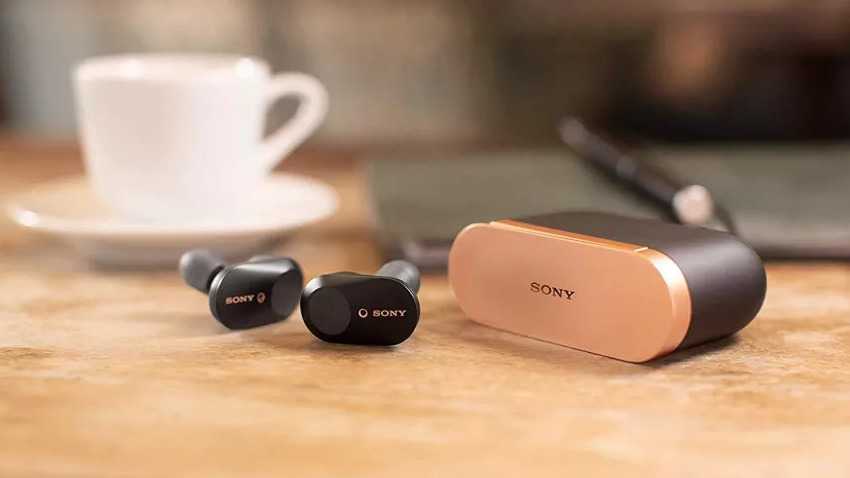 (Изображение предоставлено Sony) Независимо от того, воспроизводится ли контент 360 Reality Audio через наушники или через динамик, он начинается с того, как выполняется мастеринг музыки. Песни спроектированы таким образом, что отдельные инструменты, вокальные дорожки и любые другие записанные звуки отображаются в сферическом трехмерном пространстве. Слушатель фактически расположен в середине этой сферы, так что все различные звуки могут казаться исходящими с любого направления. Это нужно применять вручную к каждой совместимой песне, поэтому не у каждого исполнителя или даже у каждой потоковой службы есть совместимый контент. доступный. Это также очень похоже на процесс создания пространственного аудиоконтента Apple, а также на то, как контент доставляется через наушники. 360 Reality Audio использует технику, называемую бинауральным рендерингом. Проще говоря, это означает, что ваши наушники будут издавать звук в ваши уши таким образом, что ваш мозг обманут, думая, что разные звуки исходят из разных источников. По сути, он имитирует то, как мы слышим реальные звуки: наш мозг может обрабатывать даже крошечные различия в том, как каждое ухо улавливает звук, например, как звук слева будет громче в левом ухе, чем в правом. Анализируя эти различия, мозг может определить, откуда исходит звук.(Изображение предоставлено Sony) На динамиках 360 Reality Audio должно работать иначе. Фактически, он ведет себя очень похоже на Dolby Atmos, отражая звук от стен и потолка комнаты. Это создает эффект объемного звука с большим ощущением высоты, чем при двухмерных настройках: система может создать впечатление, что определенный инструмент или вокальная дорожка исходят над вами, например, посылая звуковые волны вверх к потолку, чтобы они отскакивали от вас. Одним из ключевых отличий 360 Reality Audio от пространственного звука является то, что при использовании наушников система Sony не использует отслеживание движения головы. С пространственным звуком, и даже с 360 Audio от Samsung, это может сделать воспроизведение еще более захватывающим, сохраняя неизменными исходные точки звука, даже когда вы смотрите по сторонам. С 360 Reality Audio звук, который исходит слева от вас, всегда будет идти слева от вас, даже если вы вращаетесь. Тем не менее, отслеживание головы требует, чтобы в наушниках были датчики, такие как акселерометры и гироскопы. Поскольку 360 Reality Audio в них не нуждается, он может работать с гораздо большим разнообразием наушников.
(Изображение предоставлено Sony) Независимо от того, воспроизводится ли контент 360 Reality Audio через наушники или через динамик, он начинается с того, как выполняется мастеринг музыки. Песни спроектированы таким образом, что отдельные инструменты, вокальные дорожки и любые другие записанные звуки отображаются в сферическом трехмерном пространстве. Слушатель фактически расположен в середине этой сферы, так что все различные звуки могут казаться исходящими с любого направления. Это нужно применять вручную к каждой совместимой песне, поэтому не у каждого исполнителя или даже у каждой потоковой службы есть совместимый контент. доступный. Это также очень похоже на процесс создания пространственного аудиоконтента Apple, а также на то, как контент доставляется через наушники. 360 Reality Audio использует технику, называемую бинауральным рендерингом. Проще говоря, это означает, что ваши наушники будут издавать звук в ваши уши таким образом, что ваш мозг обманут, думая, что разные звуки исходят из разных источников. По сути, он имитирует то, как мы слышим реальные звуки: наш мозг может обрабатывать даже крошечные различия в том, как каждое ухо улавливает звук, например, как звук слева будет громче в левом ухе, чем в правом. Анализируя эти различия, мозг может определить, откуда исходит звук.(Изображение предоставлено Sony) На динамиках 360 Reality Audio должно работать иначе. Фактически, он ведет себя очень похоже на Dolby Atmos, отражая звук от стен и потолка комнаты. Это создает эффект объемного звука с большим ощущением высоты, чем при двухмерных настройках: система может создать впечатление, что определенный инструмент или вокальная дорожка исходят над вами, например, посылая звуковые волны вверх к потолку, чтобы они отскакивали от вас. Одним из ключевых отличий 360 Reality Audio от пространственного звука является то, что при использовании наушников система Sony не использует отслеживание движения головы. С пространственным звуком, и даже с 360 Audio от Samsung, это может сделать воспроизведение еще более захватывающим, сохраняя неизменными исходные точки звука, даже когда вы смотрите по сторонам. С 360 Reality Audio звук, который исходит слева от вас, всегда будет идти слева от вас, даже если вы вращаетесь. Тем не менее, отслеживание головы требует, чтобы в наушниках были датчики, такие как акселерометры и гироскопы. Поскольку 360 Reality Audio в них не нуждается, он может работать с гораздо большим разнообразием наушников.
What is 360 Reality Audio?
(Image credit: Tom’s Guide)
360 Reality Audio is Sony’s attempt to recreate the enveloping, exciting sensation of surround sound using only a pair of headphones — or a single speaker.
When you’re listening to music using 360 Reality Audio, it will sound as if individual elements of the recording will originate from different points around, above and below you. So you might hear a brass section always coming from your left, a strings section above you over on the right, and if it’s a live recording, you may hear cheering and applause from all around you to simulate being part of the crowd.
Think of it as an extension of stereo audio, which most music is recorded in and mastered for. This can spread sounds over a 2D plane that stretches from the left to right, but will always sound as if the music is coming from in front of you. 360 Reality Audio can make it sound like it’s coming from anywhere and everywhere, in a fully 3D space with you in the middle.
However, it’s also reliant on music being mastered to Sony’s specifications, so not every music service has compatible songs available — and 360 Reality Audio won’t work with TV and movie soundtracks. Sony is in talks with record labels to potentially bring the technology to video recordings of live performances, though.
Design
While Sony hosted a demo of 360 Reality Audio at its vast booth on the CES show floor, we were treated to a run-through of the tech away from the hubbub in the Mirage Hotel… on the one condition we wouldn’t take any photos.
So instead, we’ll have to describe the setup.
Upon first entering the room, the whole idea seems crazy. There are speakers everywhere, 13 in total, and we were seated essentially within a sound rig. A key part of the 360 Reality Audio demo was having the hearing characteristics our ears measured and, to do that, Sony had to place incredibly sensitive sensors in each ear to create a personalised head-related transfer function (HRTF) that’s crucial to making 360 Reality Audio work — but more on that later.
The initial phase of the demo was played through this speaker-heavy set-up. It sounded incredible. Powerful and bassy, yes, but throughout the track the vocals subtly changed position in the 360-degree soundstage, percussive details appeared in unexpected places, for sure, but it was the separation that impressed us most.
Elsewhere, in a separate public demo at the booth at CES a compatible circular 360-degree speaker – calibrated to the room’s acoustics – Morgan Saint’s Glass House was playing for the audience and the immersion was so impressive that it left folks wondering if all the music was coming from that one little speaker.
The answer, of course, was yes. Yes it was.
So how is Sony cooking up this audio magic? Sony told us that it’s all based on the MPEG-H 3D Audio format, and each track can have a maximum of 24 objects each at approximately 1.5 Mbps each. It’s working with Fraunhofer IIS on all this, but the format name is yet to be confirmed.
Sony also told us that it intends to disclose details to third-party manufacturers so they can make compatible products. The availability of compatible products will be key to making this format a success.
Будущие перспективы
Хотя формат не является новинкой в полном смысле слова, он довольно хорошо справляется со своей основной функцией – обеспечением качественного многоканального звучания. Учитывая, что это нововведение разрабатывают технологические гиганты (например, Sony), в будущем планируется превращение его в новый стандарт для прослушивания музыки.
Изначально планировалось, что он лишь займет небольшое место на рынке, специально для фанатов качественной передачи музыки, однако уже сейчас появляется мнение, что благодаря Reality Audio постепенно выйдет из употребления Dolby Atmos, созданный для звукового сопровождения домашних кинотеатров. Хотя есть один существенный недостаток – в полной мере все достоинства формата слышны только в наушниках, что уже ограничивает аудиторию продукта.
В России популярность этой разработки придет значительно позже, чем в странах Европы. Это связано, прежде всего, с тем, что Sony будет ориентировать свой продукт под вкусы потребителей Запада, чьи музыкальные предпочтения отличаются от российских.
Do I need new hardware?
Perhaps the best thing about Sony 360 Reality Audio is you don’t need to buy any new kit unless you want to listen through speakers. That’s because Sony says its platform will work with any headphones. Any.
Sure, you’ll get better results with better cans but the magic is done in the encoding, not the headphones.
Best Bluetooth headphones: Top on-ear or over-ear wireless headphones
Sony points out that if you are listening via some of its own headphones you can get an enhanced result. That’s through its free Sony Headphones Connect app which personalises the audio to your particular sense of hearing. The app is downloadable on iOS and Android.
It works by taking a photograph of your ear on your smartphone (tip: get someone to help you so you get the position of your ear in the photo just right) and working out from that exactly how you hear. It then optimises the playback for your personal hearing.
Sony now has an extensive range of certified headphones, including their ever popular WH-1000XM4 and even their unusual SRS-NS7 wireless neckband speaker. The full model list can be found
Bottom line
I’m extremely impressed by Sony’s 360 Reality Audio system for headphones. It allows artists to effectively expand the soundstage into 3D space around the listener, resulting in a much more comfortable and compelling musical experience.
Of course, that experience ultimately depends on the artist who mixes their music in 360RA. With most of the tracks I listened to, I strongly preferred the 360RA mix over the stereo mix; the only exception was Mahavishnu Orchestra’s “Birds of Fire,” which could have been remixed much better in my opinion.
If you use select Sony headphones, you can customize the HRTF used to create the illusion of spaciousness based on your individual ear shape, though I didn’t find it to be much different from the generic HRTF. In any event, Sony’s 360 Reality Audio adds a new dimension to streaming audio on headphones; in fact, it’s worth getting a subscription to Tidal, Deezer, or Nugs just to hear it. I strongly recommend giving it a long listen.
How does Sony 360 Reality Audio work?
The idea is to place the listener in the thick of the audio action. Any element of a recording – by which we mean specific individual sounds, like a high-hat cymbal, backing vocalist or Bez-style maraca – can be positioned anywhere in the 360-degree sound field.
It can be finessed to give the impression of a specific angle or distance. So a detailed and expansive audio picture can be painted, with the listener in the front row or even on the stage itself.
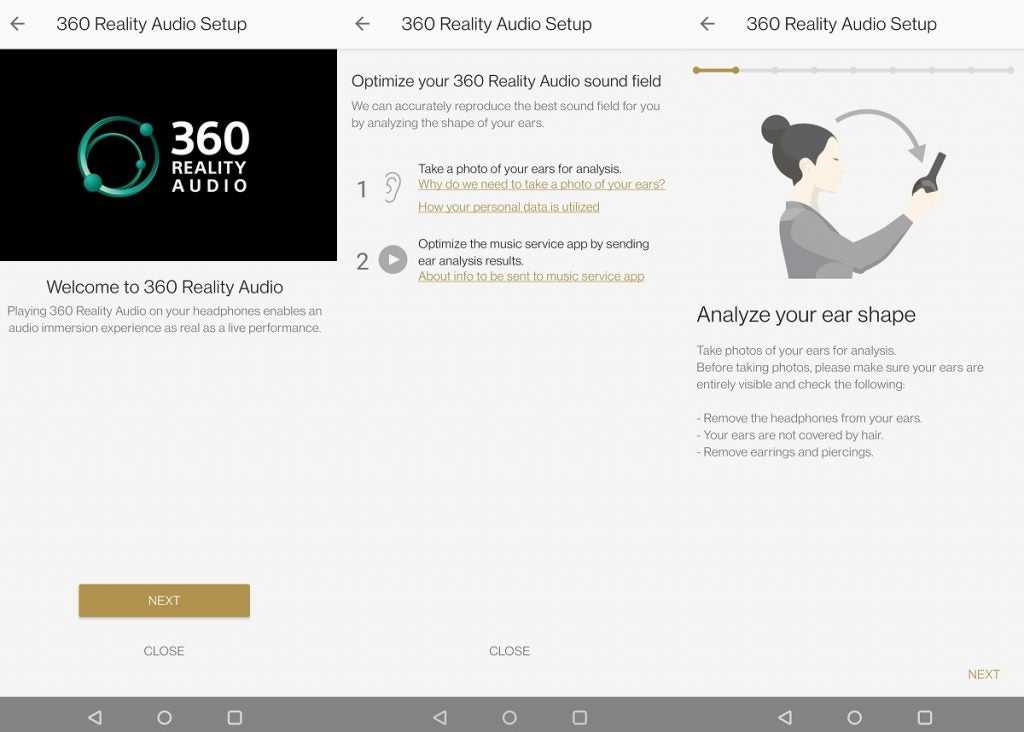
Sony states its 360 Reality Audio will work with headphones from most manufacturers, so theoretically all that’s required is a subscription to the premium tier of a partnering streaming service (and some headphones).
If you want a more personalised experience and happen to have a pair of compatible Sony headphones, you’ll be prodded in the direction of the Sony Headphones Connect app. In the app, you can capture images of your ear with the mobile device’s camera (you may want someone’s help for that), and set up an optimal hearing profile before it shoots you off to enjoy 360 Reality Audio tracks in services such as Tidal and Deezer’s 360 RA app.
Как можно слушать музыку в Sony 360 Reality Audio?
Чтобы испытать Sony 360 Reality Audio, вам понадобится подходящий комплект и совместимое программное обеспечение..
Чтобы использовать 360 Reality Audio через наушники, сначала необходимо загрузить приложение iOS/Android для совместимого потокового сервиса. На данный момент это Deezer, Tidal, Amazon Music HD и nugs.net.
Если вы не слышали об этом, nugs.net — это потоковый сервис для живых концертов. В настоящее время в каталоге компании более 10 000 концертов, включая таких исполнителей, как Брюс Спрингстин и Red Hot Chili Peppers.
Вам также потребуется подписаться на премиум-уровень указанного потокового сервиса. Например, если вы в настоящее время пользуетесь уровнем бесплатного пользования Deezer, вам необходимо перейти на Deezer HiFi, чтобы воспользоваться новым форматом. В остальном это не должно стоить вам дополнительных расходов.
Конечно, вы можете слушать Sony 360 Reality Audio через динамики , тоже. Sony недавно выпустила два динамика, совместимые с этой технологией: SRS-RA5000 и SRS-RA3000. Обе модели являются беспроводными, с Bluetooth и Wi-Fi на борту и могут подключаться друг к другу для создания мультирумной системы. RA5000 также совместим с музыкальными файлами Hi-Res, и оба они поддерживают технологию Immersive Audio Enhancement, которая повышает качество стереозвука, чтобы получить эффект объемного звучания.
Sony также лицензирует ключевые технологии, задействованные в 360 Reality Audio, а это означает, что мы должны увидеть на рынке больше совместимых устройств.
What products support 360 Reality Audio?
When the service launched in 2019, Sony said they estimated they’d be around 1000 tracks in the format. At the end of 2020, Sony said there were over 1000 tracks available – that suggests there hasn’t been a huge uptake in developing for the format.
Artists with music in 360 Reality Audio includes the Foo Fighters, London Grammar, Cypress Hill, Alicia Keys, Pharrell Williams, Paloma Faith, HAIM, Outkast and RUN-DMC, so you have a fairly diverse collection of musical genres to sample, as well as songs new and old that have been remastered to take advantage of what 360RA offers.
In terms of hardware, the first speaker able to handle Sony’s 3D audio standard was Amazon’s Echo Studio (you’ll need an Amazon Music HD subscription, though).
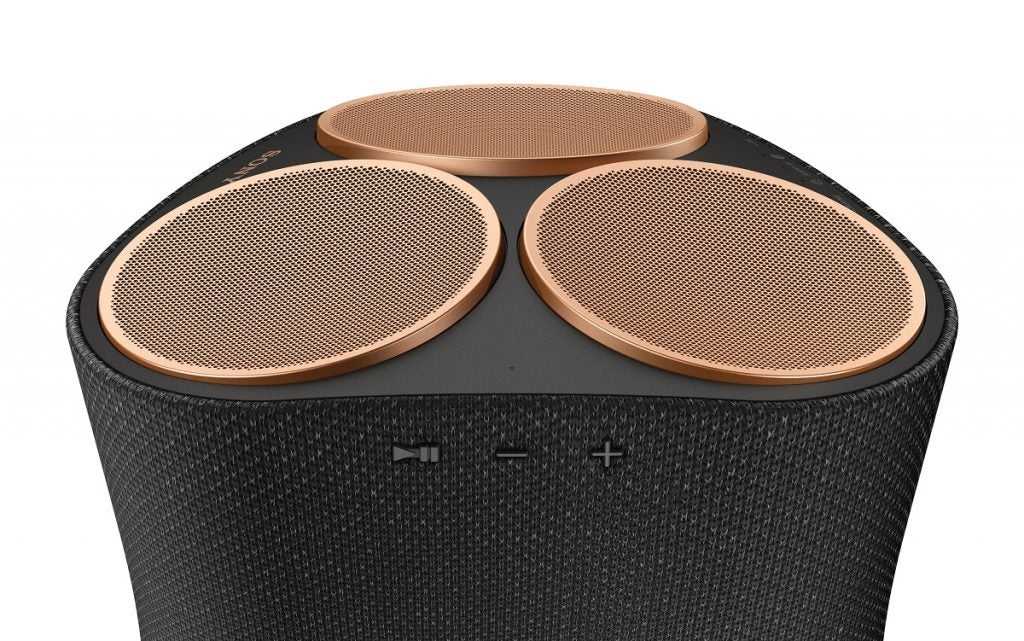
The Sony SRS-RA5000 wireless speaker
Sony has proffered its own wireless speakers with the Wi-Fi-enabled SRS-RA5000 and SRS-RA3000. They use the company’s ‘Immersive Audio Enhancement algorithm’ to create that room-filling, live music feel. The RA500 features seven woofers – three firing upwards, three to the sides and one in the centre. The RA300 is less complex (and cheaper) with two tweeters, two passive radiators and a full-range driver.
Sennheiser has also gotten into the game with the latest firmware update for its Ambeo soundbar, which can now service 360 Reality Audio content via a Chromecast connection. Currently only nugs.net music service provides Chromecast streaming for 360 RA content, but additional services are expected to follow.
More products are expected to arrive – Sony’s determination to democratise 360 Reality Audio means more Alexa-enabled, or Chromecast built-in devices will be able to support the format. Sony has been working with Google to embed the MPEG-H 3D audio into the Android code to widen its compatibility. Who knows, we could hear something about it at Google’s May I/O event.
What is Sony 360 Reality Audio?
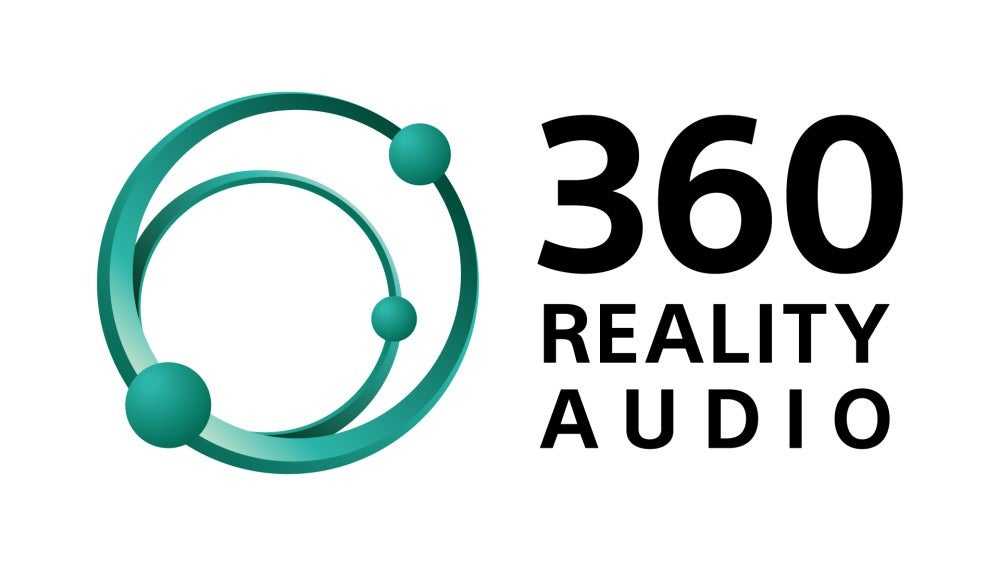
Everyone loves an interesting audio format? Stereo sound, quadraphonic sound, 5.1-channel surround sound etc – they all have something to recommend. What everyone loves less is competing audio formats that, on the face of it, do more-or-less the same thing.
At first glance, it might seem Sony’s ‘3D’ audio format – 360 Reality Audio – falls into the ‘same-thing-different-banner’ category. Object-based audio, where a soundtrack is mastered into numerous channels to create front, rear, sides and overhead of a soundfield, is a marvellous thing – but we already have Dolby Atmos and DTS:X.
Anything from a domestic 5.1.4 system to a state-of-the-art commercial cinema sounds thrillingly complete when it has a Dolby Atmos soundtrack to play with. Four overhead channels of information (in the home), or upwards of 64 overhead channels in a cinema, each receives discrete, carefully positioned information. The sense of scale, and of wide-ranging, believable movement, is always impressive.
Up to a point, 360 Reality Audio does the same thing, but the emphasis is squarely on music, making it a rival to Dolby Atmos Music.
Sony has built 360 Reality Audio around the music streaming-centric MPEG-H 3D Audio codec, which is able to support 64 individual channels. It’s made the format open-source, so smaller companies and even individual artists can get involved.
And Sony has persuaded the Big Three record companies – Sony (of course), Universal and Warner Music – as well as high-profile streaming services such as TIDAL, Amazon Music HD and Deezer – to distribute content. Qobuz was initially among the announced services, but appears to have fallen through the cracks along the way.
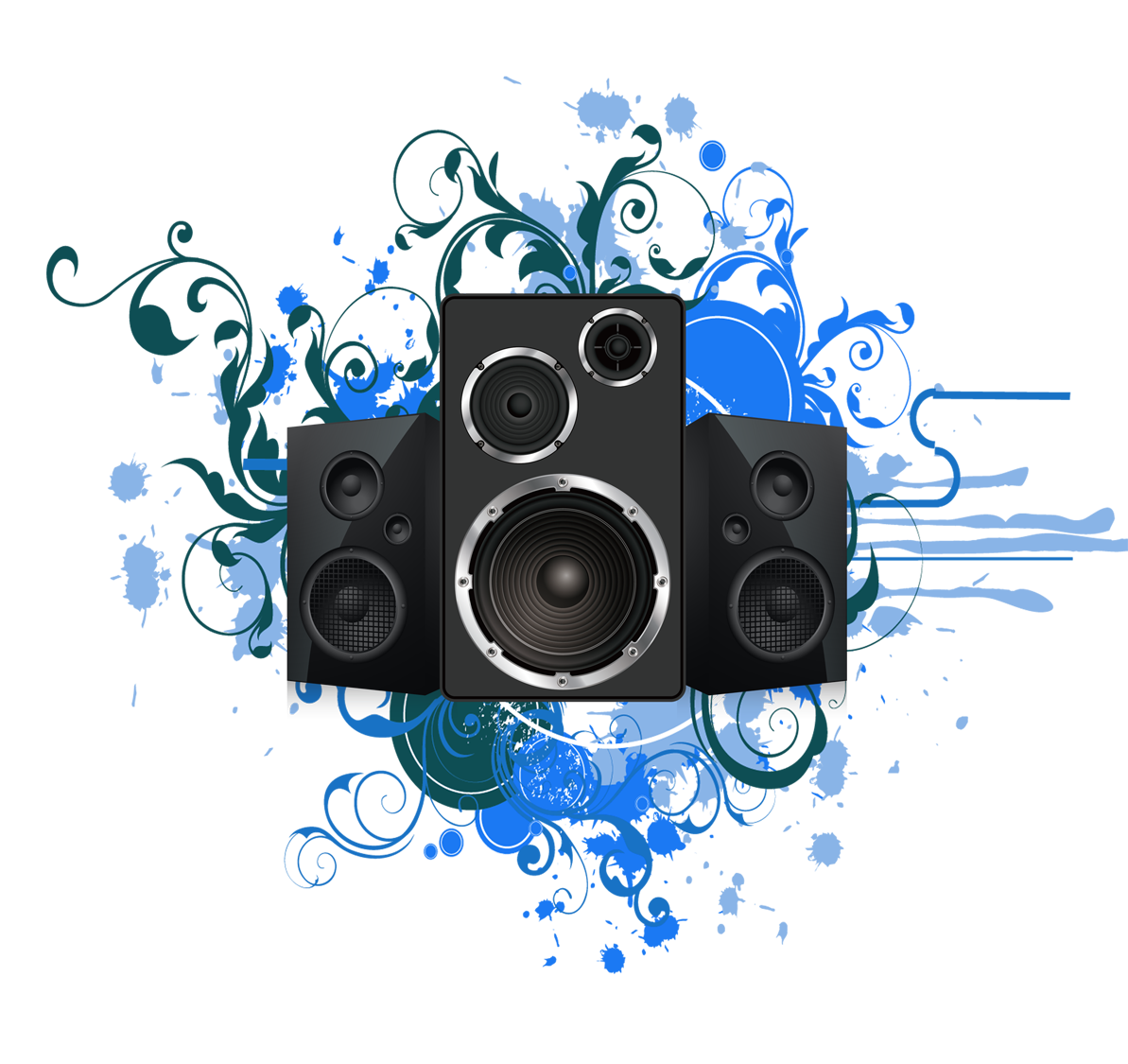













![360 reality audio поддерживаемые потоковые сервисы [2] связанный элемент и сноска](http://the-voice.ru/wp-content/uploads/4/2/6/426f6ef2957cdf8d5e31642173a7774a.jpeg)


















